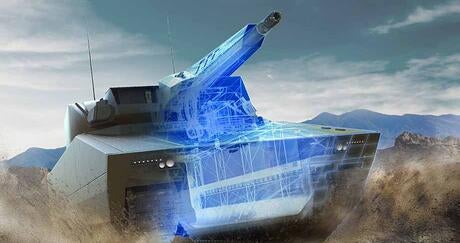This simple yet powerful idea often serves as the catalyst for groundbreaking innovation—and that was the case for L3Harris when it recently developed a solution that revolutionizes landmine detection and clearance. As part of a cooperative research agreement with the U.S. Army Combat Capabilities Development Command Armaments Center and strategic partners, the company developed a modular mission payload that enables a single operator to conduct wide-area, autonomous detection, mapping and reduction of landmines.
This prototype technology marks a major step forward in defense operations, significantly expanding the area considered for safe breaching pathways while reducing warfighters’ exposure to highly dangerous, high-casualty activities. The system also integrates seamlessly with Small Multipurpose Equipment Transport, further enhancing its versatility and effectiveness in the field.
“This system is a prime example of how, as the Trusted Disruptor, we can support our customers’ critical mission needs,” said Ed Zoiss, President, Space and Airborne Systems, L3Harris. “We can accelerate innovation when we devise creative solutions to customers’ most urgent challenges, partner with other capable and nimble companies, and iterate until we land on the right solution.”
A win for mission effectiveness and warfighter safety
Traditionally, soldiers have manually surveyed and breached minefields and other obstacles using large, cumbersome equipment and manned formations. These complex zones are not just seeded with landmines that can destroy vehicles and threaten lives, but they’re also protected by enemy forces with weapons and counterattacks. Swiftly and accurately detecting and dismantling these threats is vital – yet existing methods put warfighters in harm's way, forcing them to be within the enemy's line of sight and exposed to higher risks.
L3Harris’ modular mission payload, developed in partnership with Novel Engineering, Quaze and CoVar, tackles these challenges directly. The AI-driven system harnesses the power of commercial unmanned systems, transforming them into deployable assets for search and detection operations. Designed for use on a robotic vehicle, the system can launch a coordinated swarm of Group 1 Unmanned Aerial Systems or those weighing less than 20 pounds – to locate ground-based obstacles and enemy positions.
These agile drones, launched from an integrated pack on the vehicle, are equipped with specialized payloads and detection sensors that extend the system’s reach beyond one kilometer. And they enable troops to rapidly determine several breachable paths at once, significantly accelerating the pace of operations.
A single operator can manage the operation by issuing commands through a Human-Machine Interface which receives real-time data including the location and imagery of identified obstacles. Conducting operations remotely, troops can remain safely behind the front lines while executing critical and hazardous breaching operations with precision and efficiency.
The payload’s innovative modular design is also a game-changer for operational and cost efficiency. It can be seamlessly integrated into existing platforms, accelerating deployment timelines while reducing the need for costly equipment upgrades and replacements.

